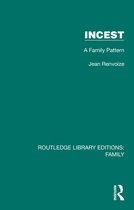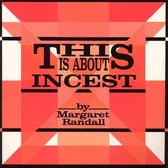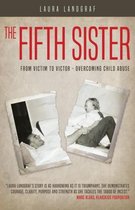Incest A Psychological Study of Causes and Effects With Treatment Recommendations
Afbeeldingen
Artikel vergelijken
Auteur:
Karin C. Meiselman
- Engels
- Paperback
- 9781555424411
- 01 januari 1992
- 367 pagina's
Samenvatting
Karin C‚ Meiselman Incest
Until the publication of this book, little attention had been paid by social and behavioral scientists to the subject of incest. Even though the concept of repressed incestuous desires loomed large in psychoanalytical theory, many questions remained about the effects of incest in childhood on psychological functioning in later life. How does incest in childhood affect personality development in adulthood? What conditions in the family encourage incestuous situations? What are typical characteristics of incestuous fathers? To what extent is mother-son incest associated with mental illness? How can incest be detected? Existing literature was largely inaccessible to the mental health practitioners who most frequently encountered such cases. Karin Meiselman filled in the blanks. Her ground-breaking work increased our understanding of shortand long-term effects of incest. Her unique study of fifty-eight cases of incestuous experiences was rare in that she included a control group in the research. Meiselman examined all types of incestuous behavior—fatherdaughter, mother-son, and brother-sister, as well as other forms of heterosexuval encounters. Her chapter on homosexual incest was the first of its kind. She presented new evidence on the characteristics of individuals involved, the kinds of sexual activity that take place, contributing family conditions, and aftereffects of the incest experience. Integrating her study with literature on incest, Meiselman's was the first comprehensive compilation of known findings on the psychology of incest.
Meiselman's conclusions remain vital as the incidence of incestuous behavior is more widely reported and more chronic in our culture. Throughout the book, she makes the observations and hypotheses of researchers over the last sixty years available to the clinician. Her recommendations provide practical help in detecting incest occurrences, handling cases, assessing both individual and family incest problems, and making effective treatment interventions.
THE AUTHOR
Karin C. Meiselman is a clinical psychologist in private practice in Pasadena, California. She has taught and supervised students of clinical psychology at the UCLA Extension, the Claremont Colleges, the California School of Professional Psychology, and the Fuller Theological Seminary. Her most recent book is Resolving the Trauma of Incest: Reintegration Therapy with Survivors.
From the informed perspective of 1991, it is difficult to recapture the rapidly changing ethos of the decade in which Zncest: A Psychological Study of Causes and Effects with Treatment Recommendations was written. On the one hand, the sexual revolution of the 1960s and early 1970s had created the opportunity for public dialogue about sexuality, and mental health professionals were urging each other to be more accepting of sexual life-styles that diverged from the mainstream. On the other hand, incest was still regarded as a rare event, a clinical curiosity that might be the subject of a case conference but did not warrant the attention of serious research. There was no financial support for such research, and any professional person expressing more than a cursory interest in the subject raised eyebrows all around the staff room.
Much as 1 would like to believe that 1 was unusually prescient in my interest in incest, my memory of the period is too accurate to allow such conceit. Motivated by my more general interest in the effects of sexual trauma and the position of women in traditional familics, initially set for myself the rather modest, constrained goal of investigating a clinical area that 1 thought would be of limited interest to others. Even when I received the enthusiastic support of Jossey-Bass Publishers partway through my writing, Ì could not conceive that clinicians and researchers all over the country were in the process of “discovering” incest and would soon be reading my book and, in many cases, writing ones of their own.
At least sixteen books on incest appeared between 1978 and 1983, as well as numerous professional and popular articles and, ultimately, magazine covers and television movies. Rather rapidly, incest and the broader topic of child sexual abuse became acceptable subjects for research within established graduate school programs, and 1 began to hear from students who were formulating dissertation proposals. [ very much appreciated the left-handed compliment accorded me by one of these students around 1982: “Your book is old by now, but your survey of the literature wrote the introduction to my proposal!”
Following the sudden prominence of the incest question among psychotherapists and the startling findings on the prevalence of incest in clinical populations, the treatment of incest became alegitimate field of specialization in the 1980s. Therapists’ willingness to believe confessions of incest and, perhaps more crucially, their attribution of significant psychological effects to incest experiences combined to greatly enhance case finding within established clinical populations. More and more frequently, people with incest in their backgrounds were identifying them selves and entering therapy with a media-induced expectation of symptom relief. The more casesidentified and the more discussion and publication in psychotherapeutic circles, the more psychologt cal effects from incest were delineated by clinicians in the form of useful hypotheses for researchers to substantiate in the future.
Since 1978 there has been a rediscovery of the importance of dissociative phenomena as sequelae to incest trauma. Repeat edly, have heard incest therapists exclaim, “Freud was right!” in the context of discussing the association of early sexual traumä with physical symptoms, amnesiac experiences, and even certaid types of hallucinations. There is now general consensus that Freud's rejection of his early theory about the connections between sexual trauma and hysterical symptom formation was a turn in the wrong direction that may have been motivated by the social and professional conditions of his time. It is as if clinical theory has returned to that early crossroads to follow the uutialh rejected road around the first bend and discover what lies bevond. Already, application of the post-traumatic stress disorder model to the long-term effects of incest has achieved currency, and the debate about how accurately this model fits emerging research data on symptom development is heating up.
Multiple personality disorder and ritual abuse have received enormous public and professional attention in recent years, embodving the most extreme type of dissociative disorder associated with the most sadistic abuse situations. Both subjects are worthy of serious attention, especially since they have previously been the objects of denial. Yet, the sensational coverage accorded these extremes often seems to be distracting us from the much more tvpical kinds of incest situations that are encountered in most clinical settings, such as the family tragedy that was portrayed so vividly in Incest in 1978. I think it is wise to remind ourselves that the role distortions in the incest family, not to mention the actual sexual trauma, are capable of producing enormous suffering in incest victims and other members of these dysfunctional famlies. Statistically speaking, this “ordinary” kind of incest family should still receive the major emphasis in clinical training programs, as should dissociative and other post-traumatic symptom pictures that do not approach the criteria for diagnosing multiple personality disorder.
Another major development since 19778 has been the rapid growth of evaluation methods used in situations in which a child discloses incest or other types of sexual abuse. In Incest, I stated quite confidently that the great majority of these disclosures by children are valid and are no more likely to be fabricated than accounts of other kinds of traumatic events. My faith in this basic assertion has not been altered by the events of the past thirteen years. However, I fully recognize the need to establish standard methods of evaluating children and other members of families in which incest is alleged. While there is still no universally accepted protocol, an intense level of clinical investigation and professional dialogue, refined by judicial opinions on the accept, ability of evidence produced by various techniques, have produced a body of knowledge about evaluation of sexually abused chik dren that should allow us to winnow out the occasional false accusation with increasing confidence.
Productspecificaties
Wij vonden geen specificaties voor jouw zoekopdracht '{SEARCH}'.
Inhoud
- Taal
- en
- Bindwijze
- Paperback
- Oorspronkelijke releasedatum
- 01 januari 1992
- Aantal pagina's
- 367
- Kaarten inbegrepen
- Nee
Betrokkenen
- Hoofdauteur
- Karin C. Meiselman
Overige kenmerken
- Editie
- 1
- Extra groot lettertype
- Nee
- Studieboek
- Ja
- Verpakking breedte
- 164 mm
- Verpakking hoogte
- 31 mm
- Verpakking lengte
- 214 mm
- Verpakkingsgewicht
- 765 g
EAN
- EAN
- 9781555424411
Je vindt dit artikel in
Kies gewenste uitvoering
Bindwijze
: Paperback
Prijsinformatie en bestellen
De prijs van dit product is 29 euro en 93 cent. Dit is een tweedehands product.Alleen tweedehands
Goed
1 - 2 weken
Verkoop door
Bogamo 8 - Boeken outlet
- Bestellen en betalen via bol
- Prijs inclusief verzendkosten, verstuurd door Bogamo 8 - Boeken outlet
- 30 dagen bedenktijd en gratis retourneren
Shop dit artikel
Rapporteer dit artikel
Je wilt melding doen van illegale inhoud over dit artikel:
- Ik wil melding doen als klant
- Ik wil melding doen als autoriteit of trusted flagger
- Ik wil melding doen als partner
- Ik wil melding doen als merkhouder
Geen klant, autoriteit, trusted flagger, merkhouder of partner? Gebruik dan onderstaande link om melding te doen.














